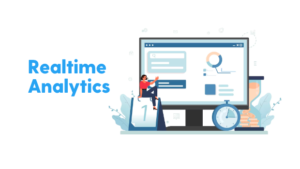SWOT analysis is a framework that is commonly used in strategic planning to evaluate the strengths, weaknesses, opportunities, and threats of a company. By identifying these factors, a company can gain a better understanding of its current position and the external factors that may impact its future performance.
SWOT Analysis Typically Involves the Following Steps
- Identify the company’s strengths, such as its unique value proposition, brand reputation, or proprietary technology.
- Identify the company’s weaknesses, such as its limited resources, lack of a competitive edge, or poor financial performance.
- Identify the external opportunities that the company can take advantage of, such as a growing market, new technology, or a shift in consumer preferences.
- Identify the external threats that the company may face, such as new competitors, changes in regulations, or economic downturns.
The purpose of a SWOT analysis is to evaluate a company’s position in the market and to help develop a strategy for achieving its goals. It is typically used as a brainstorming tool, with the goal of identifying the key factors that will affect the success of a business or project.
Once the SWOT analysis is complete, the business can use the information it has gathered to develop a strategic plan of action to address its weaknesses, capitalize on its strengths, take advantage of opportunities, and protect itself against threats.
Components of SWOT Analysis
- Internal strengths and weaknesses
- External opportunities and threats
Internal Strengths and Weaknesses
Internal strengths and weaknesses in a SWOT analysis refer to the characteristics and abilities of a business that are within its control.
Examples of Internal Strengths include:
- Strong brand reputation
- Experienced and skilled workforce
- Efficient operations
- Strong financial position
- Proprietary technology or patented products
Examples of Internal Weaknesses include:
- Lack of brand recognition
- High employee turnover rate
- Inefficient processes
- Weak financial position
- Dependence on a small number of key customers or suppliers
External Opportunities and Threats
External opportunities and threats in a SWOT analysis refer to external factors that can impact the business and are outside of its control.
Examples of External Opportunities include:
- A growing market for the company’s products or services
- Relaxation of regulations in the industry
- Advances in technology that the business can leverage
- New partnerships or collaborations that can lead to growth
Examples of External Threats include:
- Increased competition in the industry
- Economic downturns
- Changes in customer preferences or behavior
- Political or legal changes that can impact the business
- Natural disasters or other unforeseen events.
It’s important to note that the same factors can be considered as both opportunities and threats depending on the company strategic positioning and company readiness to take advantage or mitigate them.
Conducting a SWOT Analysis
Step-by-Step Guide to Conduct a SWOT Analysis
Here are the basic steps for conducting a SWOT analysis:
- Define the objective of the analysis. Clearly state what the purpose of the analysis is and what decisions or actions it will inform.
- Identify the internal strengths and weaknesses of the company. These can include factors such as the company’s resources, capabilities, and reputation.
- Identify the external opportunities and threats facing the company. These can include factors such as market trends, economic conditions, and the actions of competitors.
- Organize the information gathered in steps 2 and 3 into a SWOT matrix. This will help you to visually identify patterns and connections between the different factors.
- Evaluate the SWOT matrix to identify the most important opportunities and threats facing the company, and to determine how the company’s strengths and weaknesses can be used to address them.
- Identify specific actions that can be taken to address the most important opportunities and threats, and develop a plan for implementing them.
- Continuously review the SWOT matrix and revise it as needed as situation changes in the business environment
- Repeat the analysis periodically to ensure that the company is taking full advantage of new opportunities and addressing any new threats that may have emerged.
Sample SWOT Matrix for an eCommerce brand
After following the steps above, your SWOT matrix should look something like this.
| Strengths | Weaknesses | |
| Internal Factors | Strong brand recognition and reputation | High competition in the e-Commerce market |
| Wide variety of products available | Dependence on third-party fulfillment centers | |
| Convenient and user-friendly website | Limited control over product pricing | |
| Fast and reliable shipping | Potential issues with inventory management |
| Opportunities | Threats | |
| External Factors | Expanding into new markets | Economic downturns or recessions |
| Offering more customized or personalized products | Changes in consumer buying behavior | |
| Leveraging social media and influencer marketing to reach new customers | Potential for increased regulation of e-Commerce businesses | |
| Developing new technologies and features for the website | Cybersecurity threats and potential data breaches |
7 Tips and Best Practices for Conducting an Effective SWOT Analysis
- Involve a diverse group of stakeholders: It’s important to get input from a variety of perspectives, as different people will have different insights and opinions on the business or project.
- Be honest and objective: It’s important to be honest and objective when assessing the strengths, weaknesses, opportunities, and threats. This will help ensure the accuracy and credibility of the analysis.
- Focus on the present and future: The SWOT analysis should focus on the present and future, rather than the past. This will help identify areas for improvement and opportunities for growth.
- Prioritize the factors: Once the SWOT analysis has been completed, prioritize the factors in order of importance. This will help focus efforts on the areas that will have the greatest impact on the business or project.
- Use the analysis to inform decision making: A SWOT analysis is a valuable tool for informing decision making. Use the information gathered to identify areas for improvement, set goals, and develop strategies for achieving them.
- Update regularly: SWOT analysis is a living document, update it regularly to reflect the changes in market, internal or external factors affecting the company.
- Use it as a basis for further action: Last but not least, a SWOT analysis is only useful if it is used to inform the next steps. Identify the actions that need to be taken to address the weaknesses, threats and to capitalize on the strengths and opportunities.
Also, read:
6 Common Mistakes to Avoid in SWOT Analysis
When conducting a SWOT (Strengths, Weaknesses, Opportunities, and Threats) analysis, it is important to avoid several common mistakes. These include:
- Confusing SWOT with a goal or strategy: A SWOT analysis is a tool for identifying and understanding a company’s internal and external factors that may impact its success, not a goal or strategy in and of itself.
- Not being specific enough: Avoid using general or vague language in your analysis. Instead, be specific and use concrete examples to support your points.
- Not involving the right people: Make sure to involve people from different departments and levels within the organization in the analysis, as they may have different perspectives and insights to offer.
- Focusing too much on one aspect: A SWOT analysis should take all four factors into consideration, not just one or two.
- Not updating regularly: A SWOT analysis should not be a one-time event, but rather should be regularly reviewed and updated to reflect changes in the internal and external environment.
- Ignoring or dismissing negative points: SWOT Analysis is meant to be comprehensive and should cover both positive and negative aspects of the company or project. avoiding or dismissing the negatives may lead to an incomplete assessment.
How SWOT Analysis can be used to Inform and Support Strategic Planning Efforts
Once the SWOT analysis is complete, the company can use the insights gained to inform and support its strategic planning efforts. For example, a company may identify a new opportunity to expand into a growing market, but also be aware of a potential threat from new competitors entering the market. To capitalize on the opportunity while addressing the threat, the company may develop a strategy to differentiate its products or services through unique value proposition, building a strong brand reputation or investing in proprietary technology.
Here are some examples of how companies can use SWOT Analysis:
| Business | Strengths | Weaknesses | Opportunities | Threats |
| Restaurant | Locally sourced, organic ingredients reputation | Weak online presence | Growing popularity of plant-based diets | New restaurant in the area with similar cuisine |
| eCommerce fashion | Fast delivery, free returns | Weak mobile presence | Increasing interest in sustainable clothing options | Growing competition from other fashion e-commerce stores |
| Solar panel | High-efficiency panels, proprietary technology | Limited brand recognition, distribution network | Growing demand for renewable energy, government incentives | Intense competition, fluctuations in raw material costs |
| Retail company | Wide selection of products, convenient locations | High operating costs, limited online presence | Growing popularity of online shopping, new market expansion | Increasing competition from e-commerce companies, changes in consumer spending patterns due to a recession |
| Healthcare provider | Highly trained medical staff, cutting-edge tech | High costs, long wait times | Aging population, growing demand for telemedicine | Changes in healthcare regulations, new competitors entering the market |
| Technology company | Proprietary technology, expert engineers | Lack of diverse product portfolio, no international sales | Expanding into new industries, virtual reality becoming mainstream | Competitors with more resources, patent disputes |
It’s worth noting that SWOT analysis should be reviewed periodically as the internal and external factors of the company and industry are dynamic, thus the analysis should be updated as often as needed.
Conclusion
A SWOT analysis should not be used in isolation but rather as a part of a strategic planning process that encompasses gathering information, analyzing data, identifying key issues and trends, setting goals and objectives, developing action plans and measuring progress. Additionally, it’s crucial to be updated frequently as the environment is dynamic, the SWOT analysis will help the organization understand how to best respond to these changes and stay competitive.
To ensure that the information gathered in a SWOT analysis is used effectively, organizations should also involve key stakeholders and decision-makers in the process and use the information to inform and guide the development of specific strategies and actions that address the challenges and capitalize on the opportunities identified.
- The factors most likely influencing whether the business, project, initiative, or individual can successfully achieve an objective are depicted graphically during the Analysis.
- A SWOT analysis can encourage various perspectives and approaches involving knowledgeable cross-disciplinary team members.
- Such variety permits a SWOT analysis to sort through every component, uncover innovative thoughts, and ignore issues that could slip by everyone's notice.
- Because some strengths, weaknesses, opportunities, and threats are easily overlooked or misunderstood, the Analysis may include only some relevant factors.
- Each element's input frequently provides a biased perspective and may be empirical or subjective.
- SWOT's insight can have a limited shelf life because it only captures factors at a specific time and does not allow for how those factors could change over time.
- The development of commercial products or services;
- making employing, advancement, or other HR choices;
- assessing and enhancing opportunities and performance in customer service;
- Establishing business strategies to enhance performance or competitiveness and investing in technologies, markets, or geographical areas.













